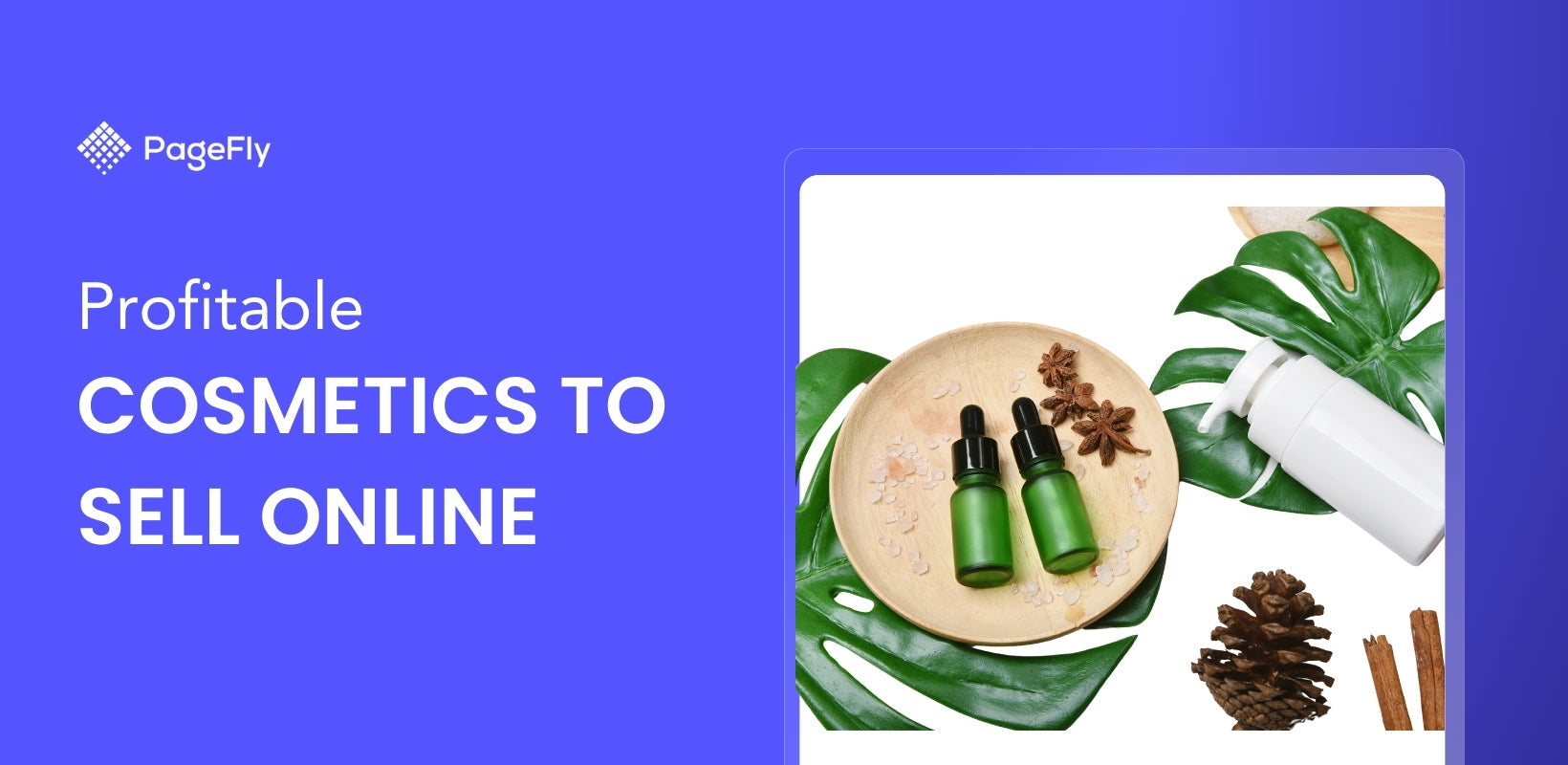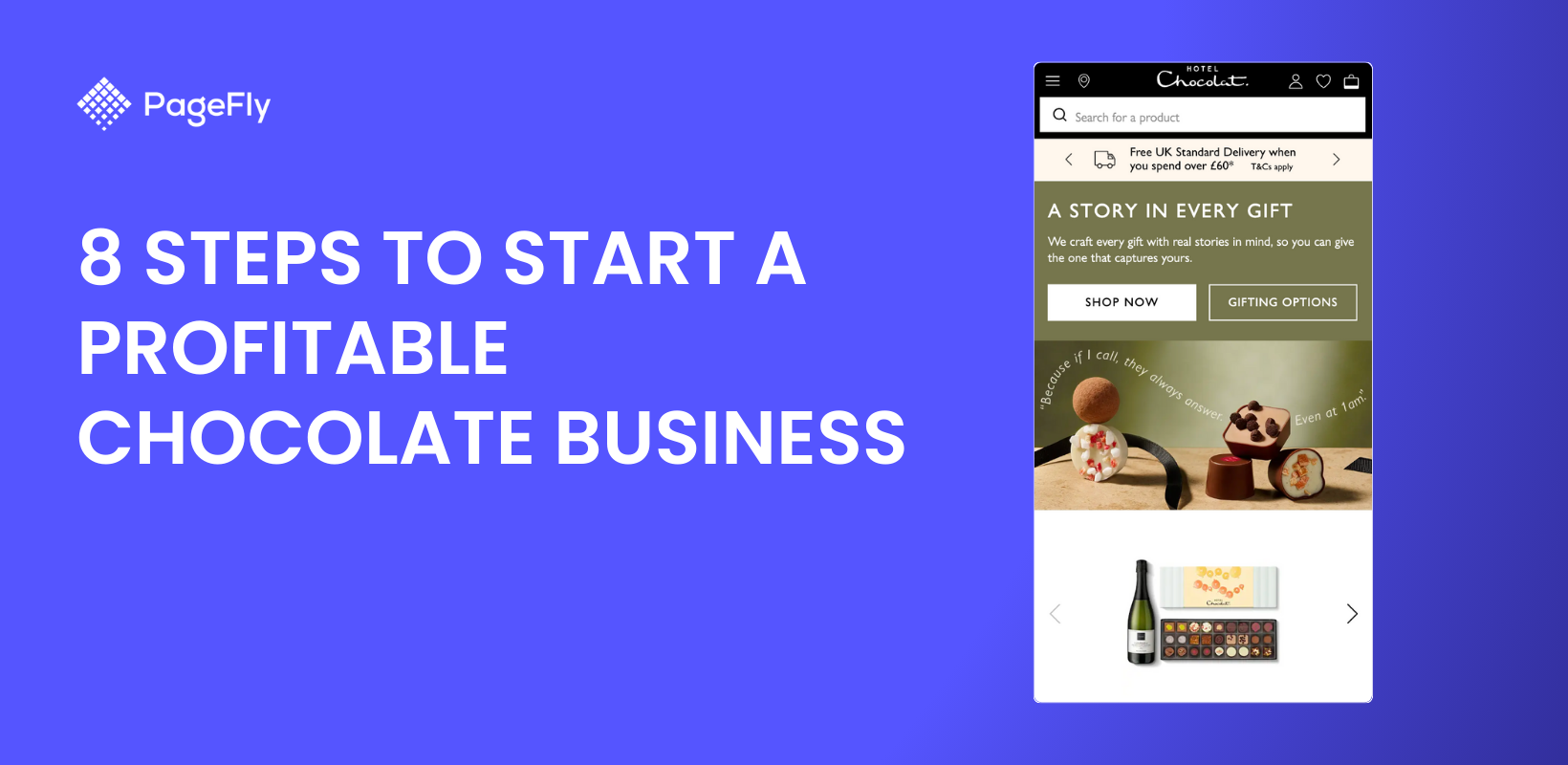What is the most profitable thing to sell online?
This question is often asked by entrepreneurs whenever they plan to establish an online business. Because after all, a business should drive profits, right?
So if you’re asking the same question, you’re in the right place.
In this article, we explored market trends to uncover the most profitable products to sell online. For entrepreneurs looking for tips on selling online for free, there are strategic approaches that can help minimize initial costs and maximize returns. That way, you don’t have to spend so much time doing so.
In our search for the top things to sell online, we enlisted the help of the time-tested and trustworthy Google Trends to see the interest in these products.
So if you’re itching to jump onto the list, let’s begin!
What Is The Most Profitable Thing To Sell Online?
Determining the single most profitable thing to sell in your Shopify store or other online marketplaces is a complex task.
Profitability hinges on a multitude of factors such as pricing strategies, market perception, competition, and customer demand. What works spectacularly for one seller might not yield the same results for another. Therefore, claiming a definitive "most profitable" product is challenging and often unrealistic.
The best items to sell online are those that not only generate online sales and profit but also build customer loyalty, encourage repeat purchases, and adapt to changing market trends.
For sustainable growth, businesses should aim to identify the best things to sell online that align with their brand, target audience, and operational capabilities. Rather than chasing short-lived profits from a single product, the goal is to create a steady stream of revenue through a well-curated product lineup.
Let’s take a look at the variables that influence a product’s profitability.
Sustainable Margins
The best things to sell online are not always the ones with high profit margins. Because most of the time, the ones that command high margins are niche markets like luxury and exclusive products that can be very hard sell.
Instead, products which you can sell at a competitive pricing and with sustainable margins could give you a best chance at success. Sustainable margins mean being able to cover operational expenses, having excess cash to reinvest into the business, and taking home a good profit that could pay for your personal expenses.
Repeatable Sales
The most profitable items to sell online are those that can be sold over and over again. That way, you can ensure good product turnover each month.
While one-time purchases contribute to short-term profitability, it is the ability to secure a consistent stream of customers and recurring sales that truly drives long-term success.
Products that fulfill ongoing needs or have a subscription-based model have a higher potential for repeatable sales. Thus, you can cultivate a loyal customer base by building customer loyalty and creating a positive user experience, leading to a steady revenue stream.
Capture The Right Market
When searching for the top things to sell online, you have two choices:
- Sell products that cater to a large target market
- Sell niche products that cater to a smaller, more specific market
Either way, both have their challenges. If you go for a large target market, chances are you’ll be going head to head with other competitors who have already cemented their names in the industry.
On the other hand, if you sell niche products, you could have a hard time introducing and justifying the existence of your products.
As such, you need to choose which type of battle you want to fight
Low Competition
Selling products online with high competition often leads to price wars, diminishing profit margins, and market shares. Contrarily, a product that faces minimal competition or offers unique differentiators has a greater chance of capturing a significant market share and, thus, higher profits.
Essentially, low competition allows businesses to position their products as distinctive and desirable, often enabling them to command higher prices they need to maintain healthier profit margins.
Top 20 Best Things To Sell Online
To ensure that there is indeed a demand for the products in this list, we cross-checked them to Google Trends.
Google Trends is a free tool that analyzes the popularity of search queries over time, offering insights into what people are searching for on Google.
We set the following parameters in Google Trends:
- Searches based in the United States
- Searches for the past 90 days
Ideally, you would want a product that has a sustained interest of 50 to 100.
With that in mind, let’s get started with our list of the top things to sell online.
Beauty Products

Source: Topicals
Starting off our list of best things to sell online is the Beauty Products category.
Beauty products can range from makeup shades to hair care products, skincare products, facial tools and devices, beauty supplements, and natural and organic skincare. These products usually have high profit margins.
The good thing about selling beauty products online is that there is a range of products for you to choose from, and you can easily replace one product for another or one brand for another without significantly affecting your market position.

In the past 90 days, interest over beauty products has been undulating, reaching a peak popularity of 100 some time between September and October. The lowest point happened within the month of August. Be that as it may, interest over beauty products remained above 50 in the past three months.
Computer Accessories

Source: KeebsForAll
As more people work from their homes and on their personal computers, they invest in the look and feel of these computers, creating a buzzing market for computer accessories sellers.
These accessories include ergonomic keyboards, ultrawide monitors, surge protectors, SSDs, docking stations, and webcams. You can also stock smartphone accessories as a computer accessories seller, as both niches are related.

Mechanical keyboards used to be a norm during the 90s to mid 2000’s. But as manufacturers moved towards cheaper and sleeker keyboards, mechanical keyboards somehow saw their decline.
But that didn’t last long. Nowadays, fascination over mechanical keyboards have been consistently growing. Resulting in the surge of stores here and there selling some fancy (and sometimes expensive) mechanical keyboards.
Google Trends proves that mechanical keyboards are indeed in great demand nowadays – with interest mostly staying slightly below the 75-point mark.
Pet Care Items

Source: Healthy Spot
With more and more people being drawn to pets nowadays, pet-related products are gaining popularity.
According to GM Insights, the global pet care market was valued at $304 billion in 2023 and is expected to grow to $545 billion by 2032. This reflects a compound annual growth rate (CAGR) of 6.8%.

Amongst the popular pet care products are shampoos. In the past 3 months, the interest on dog shampoos in the United states has been consistently bouncing back and forth within the 50 to 100-point range. This is a good indication that people are searching for god shampoos every day.
Phone Accessories

Source: Burga
Smartphone accessories typically go hand in hand with smartphone sales. But even better, they move a lot faster due to their relatively shorter lifespan and customisation appeal. These accessories include protective cases, screen protectors, chargers, cables, wireless earbuds, car mounts, power banks, and pop sockets.
With every new generation of smartphones, there’s a constant demand for accessories that are compatible with the latest devices. Likewise, with increasing mobile phone penetration, this demand is always shooting upwards.

This Google Trends graph is an interesting sight. As you’ll notice, interest in iPhone cases remained between the 25 to 50-point mark.
But a few days before September 26 2024, the interest reached a peak of 100 points. And here’s the thing, the iPhone 16 was made available to US consumers on September 20.
This goes to show that releases of new phone models impact interest in phone cases. With more iPhone and Android phones slated to release in the upcoming months and years, interest in phone cases is guaranteed.

Athleisure Wear

Source: Alo Yoga
Athleisure outfits have always been one of the best items to sell online. With more people being drawn to fitness, fitness-related products such as aparells also get to ride the bandwagon.
In 2023, the global athleisure market was valued at approximately USD 394.24 billion. It is projected to reach around USD 1,069.84 billion by 2034, expanding at a compound annual growth rate (CAGR) of 9.5% from 2024 to 2034. (Source: Precedence Research)

Interest in athleisure fashion such as yoga pants during early August was playing around between 50 and 75-point marks. But in the later parts of August up until present, the interest grew – reaching peak 100 points twice during October.
Fitness Equipment

Source: Sunny Health & Fitness
Still in the topic of fitness, interest over sports equipment such as manual treadmills has been growing as well. These treadmills present a great alternative to running outdoors particularly during the rainy and snowy season. Treadmills also offer a great solution for people who just want to hop onto a run within their homes.

Interest points for manual treadmills has a very wide spread – spanning from 0 to peak popularity at 100 points. In several instances during the past 90 days, interest for manual treadmills reached extreme lows. But most of the time, it remained pretty popular sitting in between the 50 to 100-point marks.
Fitness Supplement

Source: Hanna Valley Protein
Still in the topic of healthy living, fitness supplements are also amongst the best things to sell online. Fitness supplements such as protein powders – specifically organic protein powders are gaining traction because of users who are looking for natural supplements.

The interest for organic protein powders remains relatively high in the past 90 days, mostly staying between the 50 to 100-point marks. There was only one instance where interest dropped to zero some time between early September.
This goes to show that if you are aiming to capture the market for natural supplements, there will be a demand waiting for your products.
Wristwatches
Source: Daniel Wellington
Wristwatches remain a timeless accessory that appeals to a wide range of customers. Whether it’s classic, minimalist designs or modern smartwatches with advanced features.

A wrist watch is a staple in some men's and women’s outfits. As simple and as small a piece as they are, they say a lot about a person. Because of the demand for wrist watches, new watch brands are introduced every now and then, capturing their significant piece of the watch market.
True enough, watches never go out of style. And as reflected in Google Trends, the interest for them remains relatively high within the 50 to 100-point marks but mostly staying at 75 points. There is no low-point for wrist watch searches.
Jewelry

Source: Missoma
Starting a jewelry eCommerce business is a great option for individuals exploring business ideas for stay at home moms, as it offers flexible working hours and high profitability. Many stay-at-home parents find success in turning their creativity into a thriving business.
People often attach sentiments to jewelry, so it’s less about monetary worth and more about how the jewelry makes them feel.

Just like wrist watches, interest in jewelry remains high. In this particular example, the interest in gold jewelry mostly remains between the 75 and 100-point marks with no major dips. The lowest point over the last 90 days is approximately at the 60-point mark – which is still impressive.

Smart Home Products

Source: The Connected Shop
There is a vast market and great potential for success in selling electronic gadgets on your online store. The demand for innovative and cutting-edge gadgets continuously grows, presenting an opportunity for entrepreneurs in the ecommerce space.
And now that smart home products such as biometric door locks are becoming increasingly available, interest over them also grows.

In fact, Americans are very interested in smart door locks – with interest points mainly staying between the 50 to 75-point marks and several instances when it reaches peak popularity. Overall, there is a consistent demand for these types of products.
Kids Toys

Source: Bebemoss
The market for kids’ toys is always in demand, making it a profitable category for online sellers. This category includes various toys for different age groups and interests, such as plush toys, building blocks, puzzles, board games, dolls, and action figures.
By offering a variety of toys that promote creativity, learning, and imaginative play, you can cater to the needs of parents and gift-givers who are always seeking engaging and educational toys that provide both entertainment and developmental benefits for children.

Compared to other products in this list where the interest spread is wide, undulations in the interest over kids toys is tamer – mainly sitting consistently within the 50 and 75-point marks. But interestingly, interest in kids toys reached peak popularity some time between late October and early November.
This could be an indication that interest in children’s toys grew during the Halloween season. Alternatively, it may signify increasing interest because of the upcoming holiday season.
Baby Apparel

Source: Posh Peanut
Speaking of kids and babies, baby apparel products also join our list of best items to sell online. Because when you come and think of it, the world does not run out of newborns. Because of that, there will always be a demand for related products.

True enough, Google Trends shows a promising insight about consumer interest in baby wear. Baby wear products did not dip below 50 in the past 90 days. Additionally, there were multiple instances where demand spike to 90 to 100 points.
Household Products

Source: The Container Store
Household items continue to be relevant to this day. And by household products, we don’t simply mean cleaning products such as detergent, brooms, and whatnot.
The household niche is actually a very broad category. In fact, you can create a Shopify store selling only kitchen, bedroom, living room, or bathroom products. As such, there’s a lot of opportunities in this niche.

Taking a look at a very specific household product, cabinet organizer, gives us an interesting insight. Who would have thought cabinet organizers are so popular?
In the past 90 days, interest in cabinet organizers in the US remained between the 50 and 100-point marks with very few instances when it dipped slightly below 50.
Reusable Water Bottles

Source: Chilly’s
As the call for sustainable business practices and eco-friendly products heighten worldwide, solutions such as reusable stainless bottles gain recognition as long-term alternatives to single-use products.
Not just because their eco-friendly, stainless reusable bottles are also significantly sturdier than plastic bottles – making them usable in various situations. As such, it’s no surprise that they’re among the most profitable items to sell online.

Interest in stainless steel bottles started high in the past 90 days and slowly descended down to the 50-point market from September until present.
This surge between August and September indicates an increased demand particularly because of the opening of schools. It has since descended because most users have bought their stainless bottles. Be that as it may, these products remain relevant as it sits confidently within the boundaries of the 50-point mark.
Art Supplies

Source: Vasari Colors
Art supplies is a very niche business category because it caters to a specific type of customers – artists. But that’s not to say that it’s too late for you to launch an arts supplies store.

One of the most common products for arts supplies stores is oil paint. And you’ll be shocked to know that interest in oil paints is very high. In the past three months, the interest for oil paints sat steadily between the 75 and 100-point marks with very few instances when it dipped slightly below the 75-point mark.
Gardening Tools

Source: Niwaki
The home and garden category is the second most popular niche in Shopify with more than 226,000 live stores as of this writing. (Source: Store Leads)
As such, if you’re planning to launch a Shopify store under this category, you’ll be in for a treat.

We tried searching for the interest of the US audience in watering cans and we’re shocked to see that watering cans are still very much in demand despite the existence of watering hoses and even technologically advanced gardening solutions such as automated sprinklers.
In the past 90 days, interest in watering cans sat in the 50-point mark with some undulations upward and downward.
Footwear

Source: Thursday Boots
Footwear products are still one of the top things to sell online because shoes are not just a fashion statement, they’re a necessity for almost all types of people – students, professionals, drivers, farmers, and more. As such, they remain a staple product in society. 
The interest in leather shoes in the United States is very high. In the past three months, it sat consistently along the 75-point mark with few undulations downwards and a lot of spikes to the 100-point mark.
This illustrates that there is an audience waiting for you should you launch your own footwear brand. It’s just going to be a matter of utilizing the proper marketing strategies to reach your target audience.
Notebooks And Stationery

Source: Rifle Paper Co.
With the rise of computers and other smart devices that you can use to take note, is there still a place for manual, old-school journals?
Yes there is!

A bullet journal, or fondly called “BuJo”, is an organization system developed by Ryder Caroll. It combines elements of diary, planner, and to-do list – giving users more flexibility when using it.
The interest in bullet journals in the past three months was high. Although there was a wide spread in interest points, the undulations were mostly positive.
Outdoor And Travel

Source: Patagonia
If you’re an outdoor junkie and you want to turn your passion into a thriving business, you’d be happy to know that camping gears such as hiking backpacks are among the most profitable items to sell online.
Not only do these backpacks look cool, they are also extremely durable, allowing their users to enjoy them for a very long time – which is what makes them appealing.

The interest for hiking backpacks in the past three months was very high. The month of August saw three instances when hiking backpacks reached peak popularity among US customers. After that, interest slowly descended to 50 to 75-point mars which is still relatively high. There were no low points for this product – which is a good indication for their consistent demand.
Auto Accessories

Source: Blade
The last one in our list of the most profitable items to sell online is car accessories – particularly car mattings. With new car models being released each year by hundreds of car brands from all over the world, it just makes sense to make a business the revolves around this market.

The interest for car mats in the past 90 days was very high. In fact, there were only two instances when it dipped to slightly below 50 points, but a lot of instances when it spiked to 75 to 100 points. This is a good indication that car mats are indeed a popular product in the automotive niche.
The Best Items To Sell Online Are Those That You Can Market Correctly
Now that you have an idea about what is the most profitable thing to sell online on your Shopify store, the next steps are straightforward: find reliable suppliers and launch your store.
However, selecting a product isn’t just about tapping into an existing demand; it’s also about how effectively you can market it. The true potential lies in your ability to create demand through strategic marketing by identifying the right audience, and crafting compelling marketing campaigns.
Whether through social media platforms, content marketing, or influencer partnerships, the way you present and promote your products can significantly influence their success. For more inspiration, explore our guide on part-time business ideas that fit diverse schedules and skill sets.
In essence, the best items to sell online are not necessarily the most popular or in-demand but the ones you can confidently and creatively market. By understanding your target audience and deploying the right marketing strategies, you can generate interest and drive sales, regardless of the product's initial popularity.
Most Profitable Products To Sell Online FAQ
The most sold products online vary across categories and regions. Consumer electronics, fashion items, and beauty products consistently rank among the top-selling categories globally. For example, Amazon's Best Sellers list frequently features electronics like smartphones and accessories, fashion apparel, and beauty products.
Online shopping trends indicate that consumers frequently purchase:
- Electronics: Items such as smartphones, laptops, and accessories.
- Fashion and Apparel: Clothing, shoes, and accessories.
- Beauty and Personal Care Products: Skincare, cosmetics, and grooming items.
- Home and Kitchen Appliances: Cookware, home décor, and cleaning supplies.
These categories have consistently shown high sales volumes in e-commerce.
Products with high-profit margins often generate the most revenue online. Categories known for profitability include:
- Beauty Products: The beauty industry offers high-profit margins, with some products reaching up to 80%. (Source: SaleHoo)
- Jewelry: Online jewelry sales can yield profit margins between 42% and 50%. (Source: Website Builder Expert)
- Health and Wellness Products: Items like supplements and fitness equipment are in high demand and can be sold at substantial markups.
Profitability also depends on factors such as marketing effectiveness, brand positioning, and operational efficiency.









![14 Profitable Small Food Business Ideas for 2025 [Real Numbers]](http://pagefly.io/cdn/shop/articles/1_58b587d2-13db-4aa6-8c19-e40f5c88d3eb.jpg?v=1758255771&width=4460)
![Art Business Names: 350+ Ideas + Free Generator [2025 Updated]](http://pagefly.io/cdn/shop/articles/art_business_name_e94a54e9-d325-4ba3-94ab-7b4297952312.png?v=1760062968&width=1640)







